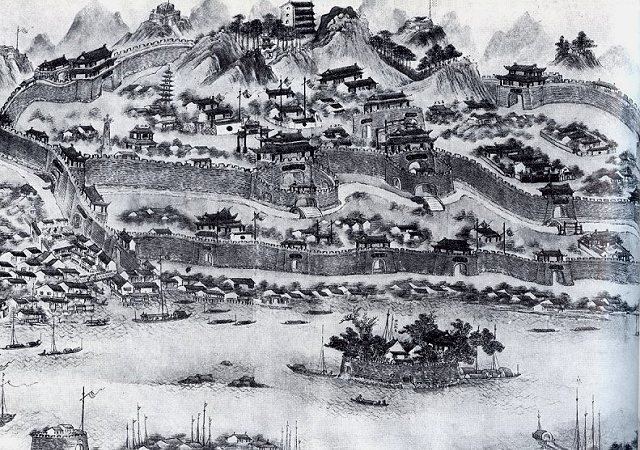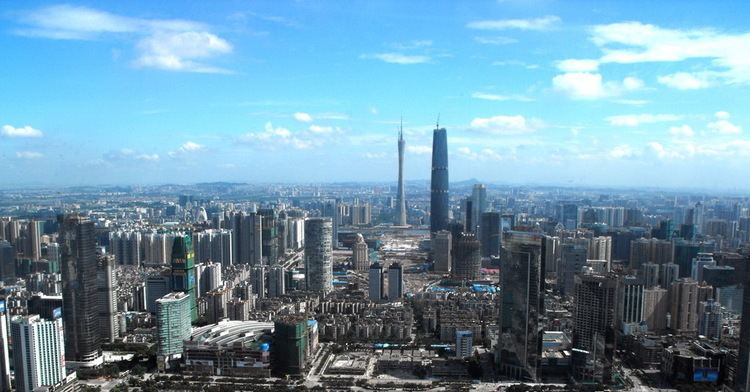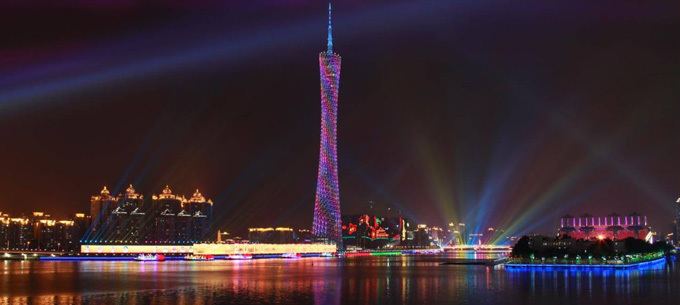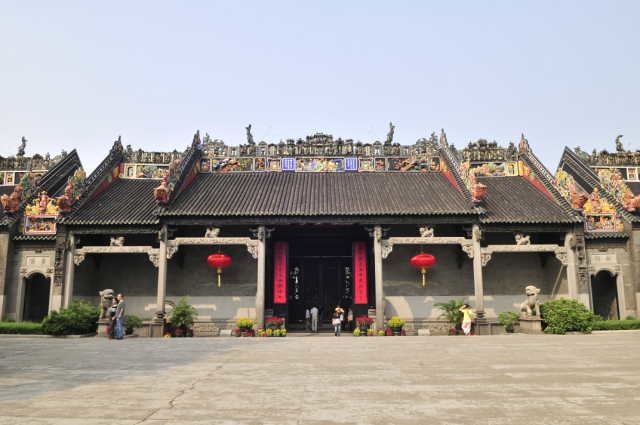Country Peoples Republic of China Population 8.525 million (2000) Area 7,434.4 km2 | Mayor Chen Jianhua | |
Points of interest Chime-Long Paradise, Shamian Island, Museum of the Mausoleum of the Nanyue King, Baiyun Mountain, Pearl River | ||
Guangzhou ( also known as Canton, and less commonly as Kwangchow) is the capital and largest city of Guangdong province in South China. Located on the Pearl River, about 120 km (75 mi) north-northwest of Hong Kong and 145 km (90 mi) north of Macau, Guangzhou serves as an important national transportation hub and trading port. One of the five National Central Cities, it holds sub-provincial administrative status.
Contents
- Map of Guangzhou
- Facts
- Guangzhou city china amazing places in china top beautiful places in china
- History
- Geography
- Economy
- Culture
- References
Map of Guangzhou
Guangzhou is the third-largest Chinese city and the largest city in South Central China. As of the 2010 census, the citys administrative area had a population of 12.70 million. Some estimates place the population of the entire Pearl River Delta Mega City built-up area as high as 44,449,738 including 10 out of 12 Guangzhou urban districts, Shenzhen (10.36 million), Dongguan (8.22 million), Zhongshan (3.12 million), Macau (0.55 million), most parts of Foshan (7.20 million), Jiangmen (1.82 million), Zhuhai (0.89 million) and Huyang County of Huizhou (0.76 million) adjoining Dongguan and Shenzhen, with an area of about 17,573 square kilometres (6,785 sq mi).
Facts
Guangzhou city china amazing places in china top beautiful places in china
History

Guangzhous earliest recorded name is Panyu (Chinese: ; Jyutping: ), derived from two nearby mountains known as Pan and Yu in ancient times. Its recorded history begins with Chinas conquest of the area during the Qin dynasty. Panyu expanded when it became capital of the Nanyue Kingdom in 206 BC; the territory of Nanyue included what is now northern Vietnam.

The Han dynasty annexed the Nanyue Kingdom in 111 BC during the empires expansion southward, and Panyu became a provincial capital and remains so today. In 226 AD, Panyu became the seat of Guang Prefecture (; Guangzhou / ; Guangfu).
Although Guangzhou replaced Panyu as the name of the walled city, Panyu was still the name of the surrounding area until the end of Qing dynasty. Today, Panyu is a district of Guangzhou south of Haizhu District separated from the rest of the city by the Pearl River.
The Old Book of Tang described Guangzhou as important port in the south of China. In that period, direct routes connected the Middle East and China. A Chinese prisoner, who was captured in the Battle of Talas and stayed in what is now Iraq for twelve years, returned to China by ship on a direct route from Iraq to Guangzhou. Guangzhou was mentioned by various Muslim geographers in the ninth and tenth centuries, such as Al-Masudi and Ibn Khordadbeh. Guangzhou was known as Khanfu ????? by the Arabs. According to a local Guangzhou government report, the city was sacked by Muslims on October 30, 758. The Arab historian Abu Zayd as-Sirafi mentioned Guangzhou several times in his book The Journey of as-Sirafi (Arabic: ), providing a description of daily life, food, business dealings, and the justice system of the city. As-Sirafi also reports that in 878 followers of the Chinese rebel leader Huang Chao besieged Guangzhou and massacred a large number of foreign merchants residing there. The foreign merchants were Arab Muslims, Persians, Jews and Christians
During the Five Dynasties and Ten Kingdoms Period, Guangzhou was the capital of the Southern Han state which existed from 917 to 971, and was one of the most stable of the southern states. The region enjoyed considerable cultural and economic success in this period.
From the tenth to twelfth century, Persian women were to be found in Guangzhou. Multiple women originating from the Persian Gulf lived in Guangzhous foreign quarter. Some scholars did not differentiate between Persian and Arab, calling them both "Dashi" (Chinese: ; pinyin: ), and some say that the Chinese called all women coming from the Persian Gulf "Persian Women".
The Moroccan traveler Ibn Battuta visited Guangzhou in the 14th century in his journey around the world. He described the manufacturing process of large ships in the city.
During the Northern Song dynasty, the celebrated poet Su Shi (Shisu) visited Guangzhous Baozhuangyan Temple and wrote the inscription "Liu Rong" (Six Banyan Trees) because of the six banyan trees he saw there. It has since been called the Temple of the Six Banyan Trees.
The Portuguese were the first Europeans to arrive in Guangzhou by sea in 1514, establishing a monopoly on the external trade out of its harbour by 1517. They were later expelled from their settlements in Guangzhou (Cantao in Portuguese), but instead were granted use of Macau as a trade base with the city in 1557. They would keep a near monopoly on foreign trade in the region until the arrival of the Dutch in the early 17th century.
Geography

Located in the south-central portion of Guangdong, Guangzhou spans from 112° 57 to 114° 03 E longitude and 22° 26 to 23° 56 N latitude. The city is part of the Pearl River Delta and the city centre is situated next to the Baiyun Mountain, which is locally referred to as "the lung of the city" (). The total area under the citys administration is 7,434.4 square kilometres (2,870.4 sq mi).

The elevation of the prefecture generally increases from southwest to northeast, with mountains forming the backbone of the city, and the ocean comprising the front. Tiantang Peak (, meaning Peak of Paradise in Chinese), which stands 1,210 m (3,970 ft) above sea level, is the highest mountain in Guangzhou.
Economy
Guangzhou is the main manufacturing hub of the Pearl River Delta, one of mainland Chinas leading commercial and manufacturing regions. In 2013, the GDP reached ¥1542 billion (US$248 billion), per capita was ¥120,515 (US $19,459).
Culture

According to the official Peoples Daily newspaper, Cantonese is the first language for half of the 14 million residents of the provincial capital Guangzhou, while the other half speak mainly Mandarin. Other languages such as Hakka are spoken in significant numbers as well. The migrant population from other provinces of China in Guangzhou was 40 percent of the citys total population in 2008. Most of them are rural migrants and they speak Mandarin and other local dialects from their hometowns. They have taken on many jobs that the locals are unwilling to do.

Guangzhou is also known to have a sizeable African population.
Significant components of the culture of Guangzhou include:
